BELI LENA RESEARCH
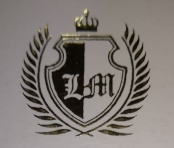
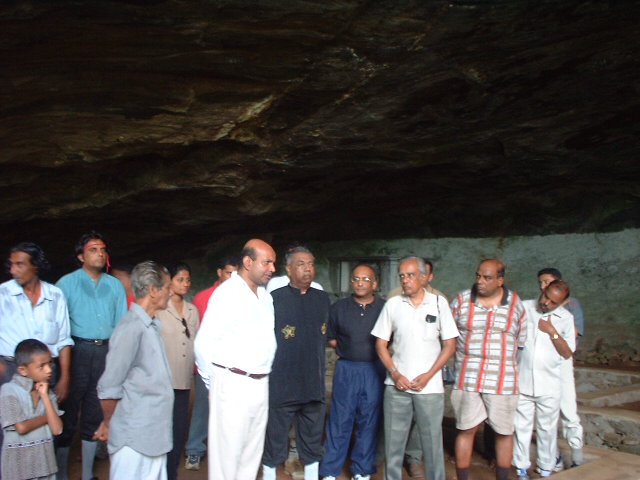
Dr.Siran Deraniyagala, Prof. Anton Jayasuriya, Prof. Lakshman Madurasinghe and team members in 2001 at the Beli Lena
At a world congress hosted in Austria from June 26th to 30th, 2001, attended by international medical laureates from all continents, the launching of the Apollo International Open Digital University heralded the dawn of a new era in digital, geo-centric satellite-based medical consultancy services and integrated medical education for the entire world, through a universal worldwide web. This undoubtedly transcends all ethnic and geographical boundaries and partisan compartments created by local Medical Councils that restrict medical practice and knowledge. Their purpose is to unionize and restrict practice and exploit illness in order to maximize monetary gain for unscrupulous healers.
This historic international event was received with universal acclaim and a person of the highest medical stature, Prof. Christiaan Barnard, the pioneer of heart transplant surgery, was inducted as the Patron of this University.
An eminent Sri Lankan medical consultant, Lord Pandit Raja-Guru Professor Dr. Sir Tibetian Lama HealerAnton Jayasuriya who is a household name in Acupuncture, Homoeopathy, Rheumatology and Complementary Medicines was inducted as the Dean of this University. Jayasuriya was introduced to the audience as having more degrees than a thermometer. He is the author of 52 books has hosted over 600 seminars and World Congresses in 110 countries, and with a student body of over 140,000 doctors from 139 countries. He has also treated over two and a half million patients free of charge in 47 years of his medical practice. Jayasuriya added much colour to the inaugural event by a lucid exposition that the origins of acupuncture were in pre-historic Sri Lanka. Prof. Jayasuriya’s thesis is based on newly discovered scientific, archaeological and palaeontological evidence.
Opening his presentation, Prof. Jayasuriya stated that by a remarkable coincidence, he was presenting his findings before an erudite audience in Austria itself. There three years ago scientists discovered and analyzed the well-preserved frozen body of a 5200-year-old-iceman on the Austrian-Italian border. He was nicknamed Oetzi after the Oetztaler region in the Tyrolean Alps, where he had surfaced after the glacier had melted due to global warming. His body had several distinct tattoo marks coinciding with both local and distal acupuncture points, used for treating a spinal disorder complicated by sciatica (probably a lumbar discopathy). He was probably a warrior as his outfit indicated; also he had several healed old rib fractures. This discovery dramatically alters the hitherto prevailing theory that acupuncture originated in China around 3000 years ago, because obviously it had been practised in Europe (Austria and Italy) over 5200 years ago, much longer than what the Chinese claim as the origin of their acupuncture. The European Iceman’s acupuncture therapy precedes Chinese acupuncture practice by well over 2000 years.
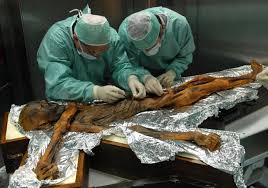

 Considering the latest body of evidence, Jayasuriya added that it was quite clear that such European acupuncture techniques went along the spice route from ancient Sri Lanka to Europe and also the Southern Mediterranean reaching Egypt and North Africa. Along this route from Sri Lanka to the West, our ancient tradesmen- travellers had carried on their elephant caravans mainly spices of Sri Lanka, which were primarily herbal medicines for the European population. Not only spices but also our poisons were (and are) taken to Europe for medicinal purposes, e.g., Nux Vomica (strychnine from Goda Kaduru), Rosa Vinca (vincristine from Mini Mal). There is no doubt about the authenticity of this route as ancient gold coins of the times of Julius Caesar, Hannibal and even before the time of Christ have been discovered at the ancient cities of Anuradhapura, Sigiriya and other sites in Sri Lanka. It has also been established that the Egyptian mummies over 7000 years ago entombed in pyramids had black pepper stuffed in their nostrils to preserve the bodies. This variety of black pepper grows and is available only in Sri Lanka and Kerala region of India, even today. Therefore, it was conceivable that along the spice route, not only spices but other healing techniques including acupuncture spread to Europe, and later spread to China along the reverse of the silk route originating in Xian, China.
Considering the latest body of evidence, Jayasuriya added that it was quite clear that such European acupuncture techniques went along the spice route from ancient Sri Lanka to Europe and also the Southern Mediterranean reaching Egypt and North Africa. Along this route from Sri Lanka to the West, our ancient tradesmen- travellers had carried on their elephant caravans mainly spices of Sri Lanka, which were primarily herbal medicines for the European population. Not only spices but also our poisons were (and are) taken to Europe for medicinal purposes, e.g., Nux Vomica (strychnine from Goda Kaduru), Rosa Vinca (vincristine from Mini Mal). There is no doubt about the authenticity of this route as ancient gold coins of the times of Julius Caesar, Hannibal and even before the time of Christ have been discovered at the ancient cities of Anuradhapura, Sigiriya and other sites in Sri Lanka. It has also been established that the Egyptian mummies over 7000 years ago entombed in pyramids had black pepper stuffed in their nostrils to preserve the bodies. This variety of black pepper grows and is available only in Sri Lanka and Kerala region of India, even today. Therefore, it was conceivable that along the spice route, not only spices but other healing techniques including acupuncture spread to Europe, and later spread to China along the reverse of the silk route originating in Xian, China.
Professor Jayasuriya stated that according to the chronicle Mahawansa we have an authentic recorded history covering a period of 3000 years. According to legend, King Ravana, a king as well as a healer, ruled Sri Lanka about 10,000 years ago. King Ravana is portrayed as having ten heads (the ten Ministries of his Government) and twenty hands with one palm of hands holding acupuncture needles. However, contrary to the popular belief that Sri Lanka has a history spanning only a few thousand years, the latest scientific archaeological and paleontological findings of the celebrated archaeologist Dr. Siran Dereniyagala, Director of Archeology a world-renowned authority in archaeological research points to human habitations of the Homo sapiens in Sri Lanka as far back as 300,000 BP (Before the Present).
The period from about 37,000 years ago, the prehistoric archaeological record is more complete (and most reliable). Extensive studies including radio-carbon dating methods and thermo-luminescence studies carried out in U.S.A. have confirmed the time frame covered by four caves excavated in the lowland wet zone, of Sri Lanka. These were Fa Hien Lena near Bulathsinhala where archaeologists have discovered human habitation at this site from 37,000 BP to 5400 BP; Batadomba Lena near Kuruwita with human habitation from 31,000 BP to 11,500 BP; Beli Lena at Kitulgala with human habitation from 30,000 BP, where the most extensive research has been so far conducted by the Sri Lankan and American archaeologists and paleontologists from Arizona and Cornell (U.S.A.) universities. The fourth cave is Alu Lena near Kegalle showing human habitation from 10,500 BP.
The well-preserved evidence at Beli Lena near Kitulgala indicates that a wide range of plants, animals and seafood (oysters) were consumed as food by the man who lived here popularly known as the Balangoda man. This mixed gourmet diet was well balanced as attested by the robusticity of the human skeletal remains 16,000 years old. The average height of the Balangoda man was over 6 feet. They were quite healthy, despite the lack of modern medicines, antibiotics and immunizations. (The Veddah chief Tissahamy died three years ago at the ripe age of 104 years. It is believed that he descended from a branch of the Balangoda man).
There is clear evidence that from the periods 17,000 to 10,000 years ago in Maha Eliya, (now called Horton plains), organized farming was carried out, among which barley and oats were popularly cultivated. This is the first evidence in the world of man upgrading himself from the hunter- gatherer stage to the agrarian age. The only other region that compares favorably for evidence of farming during this period is the Iran and Iraq region. This metamorphosis of the human from Homo sapiens to Homo sapiens sapiens (Balangodensis) alias Modern Man may have occurred in Sri Lanka for the first time.
The Balangoda man created geometric microlith tools fashioned into various functional shapes, such as lunate, triangular, trapezoidal forms and pointed needles of quartz, flint and other materials. Such geometric microliths have generally been considered the hallmark of the Mesolithic period as first discovered in Europe and dated at 12,000 year ago. Hence it came as a surprise when such tools were found as early as 31,000 years ago in Sri Lanka. Apart from microliths, stone tools and artifacts made of bone and antler which were quite prolific from 31,000 years ago and after, notably small pointed bones and also needles for piercing the skins not only for tatooing or injuring animals to kill them but also for the use of needles to stitch clothes and most importantly for acupuncture treatment as confirmed in the researches of two Swiss authorities Drs. Serasin and Serasin was published in 1908.
In pre-historic times, acupuncture had been practised widely in Sri Lanka in a much broader spectrum than in China, where acupuncture was used only on humans. In Sri Lanka acupuncture has been used not only on humans but also on domestic animals, particularly on elephants to tame them and treat their sicknesses, as evidenced in the well-preserved Ola leaves, from the periods before Christ. The acupuncture needle used on the elephant is the henduwa. There is also reason to believe that in Sri Lanka acupuncture was practiced also on trees to treat plant pathology. This knowledge is still practised in remote villages.
A study of the Balangoda man’s jaw bones by new techniques of dental morphological analysis conducted by Dr. Diane Hawkey of Arizona State University, U.S.A., which is more accurate than DNA analysis, shows the close affinity between the Balangoda man and the Austro- Asiatic people of Eastern and North-Eastern India implying that they are of a common stock. This work also conclusively proves that the Balangoda man was the first Homo sapiens sapiens who became the lord of this planet, giving credibility to the legend that Sri Lanka was the Garden of Eden, the Paradise of Genesis.
It is quite clear on the basis of these findings that acupuncture originated in Sri Lanka, probably even as far back as 37,000 years ago and spread later along the spice route, along with the medicinal spices (and poisons) to Europe. That explains why the Austrian Tyrolean Iceman had been treated with acupuncture 5200 years ago. On the reverse of the silk route with the cross-fertilization of knowledge, acupuncture went to China where it flourished for the past 3000 years. Credit must be given to the traditional Chinese physicians for having preserved the traditions with the underpinning of the Philosophy of TAOISM. Chinese Tea (Camilia Sinensis) became world-famous as Ceylon Tea. Prof. Jayasuriya humorously added that Cricket originated in the greens of England and Scotch in Scotland- but today we have beaten them both at cricket and scotch, even with a name Jayasuriya prominently hitting sixes one after the other.
Prof. Christiaan Barnard has been invited to attend the World Congress to be held in November, 2001 at the BMICH, Sri Lanka. Here further evidence on the origins of acupuncture in Sri Lanka will be presented before a group of delegates from over 100 countries, including 56 delegates from China.
A team comprising Prof. Lakshman Madurasinghe, Consultant Psychologist and Head of Psychotherapy, and Dr. Lohitha Samarawikrema, Consultant Physician, who are the leading medical researchers, supported Professor Jayasuriya. This research is based on the brilliant archaeological findings and publications of Dr. Siran Dereniyagala PhD, Director General of Archeology in Sri Lanka.
BELI LENA CAVE
Belilena is a very large cave, in which the 12,000-year-old skeletal remains of the prehistoric ‘Balangoda man’ (Homesepiens Balangodensis) have been found. In order to reach the cave you have to walk through the jungle, close to the Inoya estate (approx. 8 km from Kitulgala itself).
Located 2000 feet above sea level, the Belilena Cave lies amidst picturesque environs close to Kitulagala. Recent archaeological excavations conducted at the cave have unearthed several fossils believed to be more than 32,000 years old.
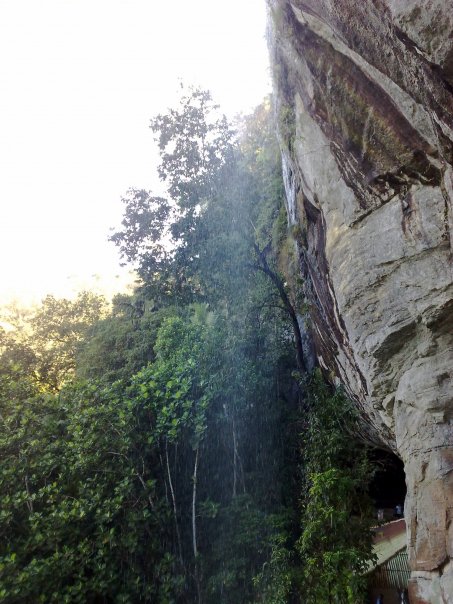
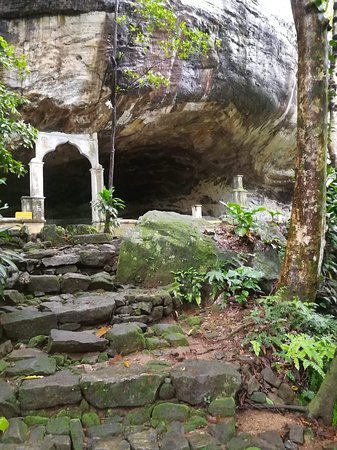
The part of the cave beyond the lake that fills it a short way from its mouth still remains unexplored to this day.
This Huge Cave has been home to the prehistoric ‘Balangoda Man’ (Homo sapiens balangodensis) where 16,000 year old skeletal remains have been found. Fa Hien-lena has yielded the earliest evidence (at ca. 37,000 BP) of the ‘Balangoda Man’ followed by Batadomba-lena at 31,000 and 18,000 BP.
These caves have also yielded other artifacts such as prehistoric tools belonging to the 30,000 BP. Batadomba-lena caves have yielded tools going back to 31,000 BP. These are important findings to whole of Asia as these tools are considered to have first originated in Europe around 12,000 BP

 Click For Other Research
Click For Other Research
Click For Publications
Click to download e-Consciousness overview
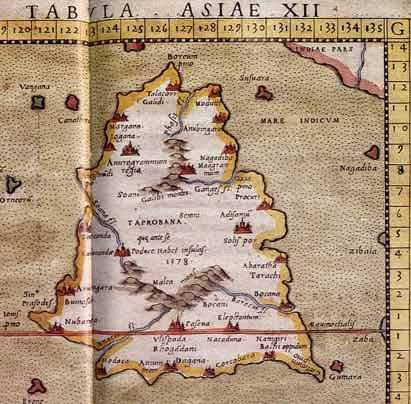
The official seal was used 2300 years ago. Findings of Prof.Raj Somadeva, PhD
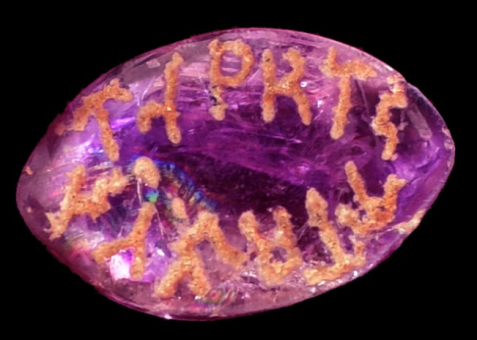
Five Million Years BC – Beginning of the Humans. Five million years ago, Human-like Apes lived in Africa. They developed into humans over a period of 2-3 million years. During the ice age which began around 2.5 million years BC, these humans started to walk over the frozen landscape.
One Million Years BC – Humans migrate from Africa to the rest of the world About 1 million years ago, Humans migrated from Africa, to Asia, Indonesia and Europe over frozen landscapes. Until then, early humans had lived only in Africa. Archaeologists believe that humans inhabited Sri Lanka during this migration. During the migration, the humans learnt to make and use primitive hand tools like axes.
700,000 BC – Humans in Lanka Archeologists claim that Sri Lanka was definitely inhabited by humans by 700,000 BC.
500,000 BC – The humans had started to use fire.
Oldest human found in Sri Lanka
123,000 BC – Oldest human found in Lanka – Pathirajawela in the deep South. A student from Bundala Central school recovered the oldest Lankan human’s remains and his stone tools in Pathirajawela in Deep south, near Ambalantota. This Lankan had lived 20,000 years before the Neanderthal inhabited the earth. It has been estimated, at an international average, that the population density for Lanka, at the time was 0.8-1.5 per SqKm in dry zone and 0.1 in wet zone. They had lived in groups of 1-2 families, not in large groups due to scarcity of food. With this proof of pre-historic settlement in Lanka, Patirajawela also exposed a flake and stone tool industry belonging to 125,000 to 75,000 BC. This meant that the Lankans had already started their long journey towards civilization.
80000 BC – Ratnapura – Lions, Rhinoceros and Hippos From an excavation in Ratnapura District, archaeologists have found the remains of animals. That included a hippopotamus with six incisor teeth, a rhinoceros, and a lion. Along with these animal remains, stone artefacts comprising, typically, large choppers and flakes of quartz and chert, have been found. However, apart from a human calotte from a gem pit near Ellawala, no human remains have been discovered yet from the Ratnapura……..
In June 2020 research carried out by the Max Planck Institute, Griffith University in Australia, and the Sri Lankan Government Department of Archaeology, showed that occupants of the Fa-Hien Lena cave had developed bow and arrow technology 48,000 BP. This is the oldest use of this technology outside of Africa.
Ravana sites in Sri Lanka
Rawana Elle
Raagala
Images of Ceylon
Sinhala Language
Sinhala Grammar – Mendis
Kings of Sri Lanka
Adam’s Peak
Mahawamsa- The Great Chronicle of Sri Lanka
NASA images of Adam’s bridge in Sri Lanka
Sri Lanka Tourism 5-part series on Ravana
History & Culture of Sri Lanka


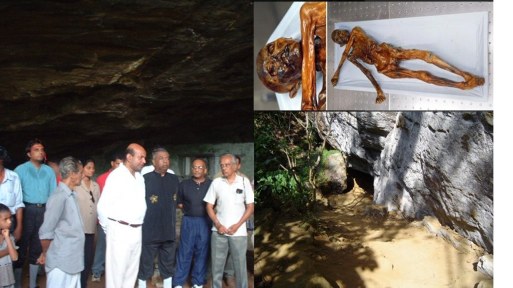
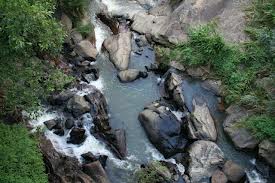
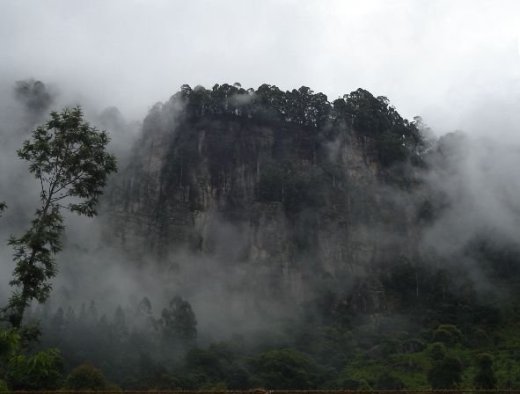

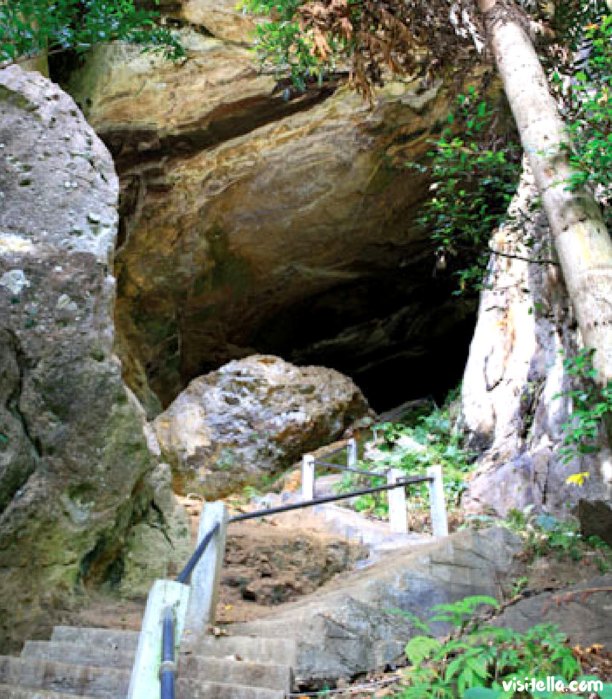
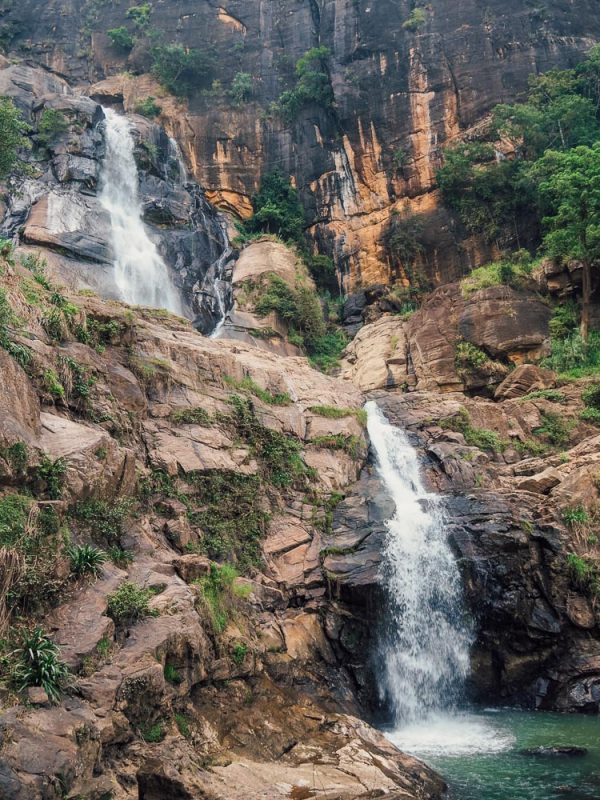
You must be logged in to post a comment.